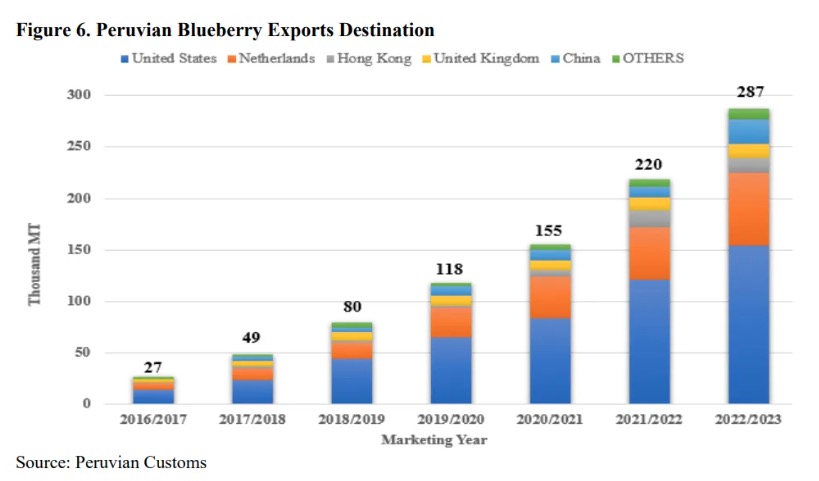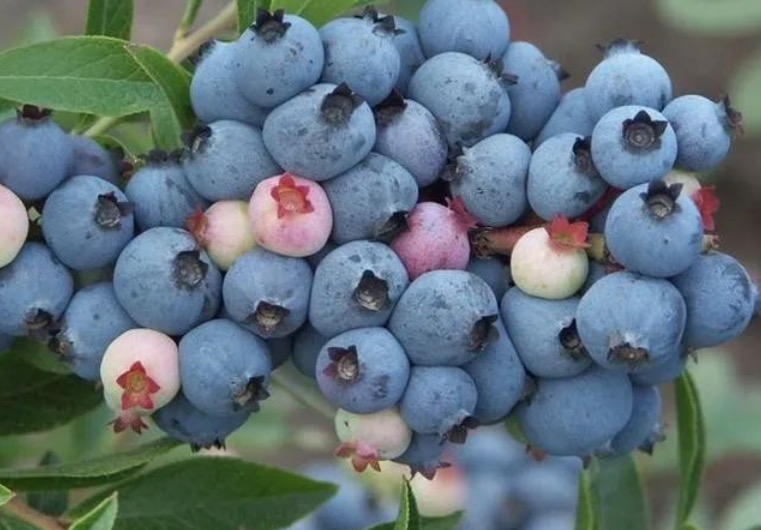People who love eating blueberries know that the best way to eat blueberries is to eat them by the handful, which can balance the sour and sweet levels of each fruit and get the most perfect taste. However, the blueberries in the small box are so precious. Why are the prices of blueberries so high?
Firstly, the difficulty of growing is high.
Blueberries are very delicate and have very high requirements for planting! Especially for the soil, blueberries can only grow healthily in loose and acidic soil rich in organic matter. Just the soil improvement is a considerable cost of planting. At the same time, advanced blueberry planting technology is also required, which requires careful care and no pesticides can be sprayed, but it is also vulnerable to pests and diseases.
Secondly, the difficulty of picking is high.
As a very delicate berry, blueberries must be carefully picked by professionals by hand. The picking method of blueberries is very particular. You can't rub off the surface powder, nor can you crush the mature fruits, nor can you pick the unripe fruits in a bunch of blueberries together. The labor cost can be imagined.
Limited quantity, but wide demand.
In recent years, the international output of blueberries has been increasing, but blueberries still far cannot meet our appetite. Many blueberries on the market are still exported to more countries, such as Chile, Peru, and Canada, which are all blueberry exporting countries.

The US Department of Agriculture recently released the "2023 Peru Blueberry Annual Report", which shows that due to the warming of weather conditions, after experiencing significant growth in the past decade, Peru's blueberry exports have declined sharply in 2023, especially in the main producing areas in northern Peru, where the flowering period between March and October has been severely affected. It is expected that the blueberry yield in Peru's 2023/24 production season (May 2023 to April 2024) will be 195,000 tons, a 37% decrease from the previous season; the export volume is expected to be 165,000 tons, a 43% decrease from the previous season. The unexpectedly large drop in Peru's blueberry output has led to a price increase, driving an 28% increase in its export value in 2023.

Peru's blueberry planting area has grown significantly in the past decade, increasing from 80 hectares in 2012 to approximately 18,000 hectares currently, with an average annual growth rate of 70%. In the 2022/23 production season, Peru's fresh blueberry exports increased significantly by 30% compared to the previous season, increasing from 219,000 tons to a record 287,000 tons. Throughout 2023, the coastal areas of Peru, especially in northern Peru, have experienced unfavourable climate conditions. In March 2023, an反常 low-pressure system formed along the coasts of Ecuador and Peru, resulting in heavy rain, high temperatures, floods, and landslides that lasted until May. After that, the autumn and winter were warmer, with temperatures 4-5°C higher than the average, which had a particularly large impact on the Ventura and Biloxi varieties. Ventura is currently the largest variety in Peru, accounting for 35% of the total harvest area, while the Biloxi variety is the second largest, accounting for 25%. The high temperature disrupted the flowering cycle of a considerable number of plants, resulting in a reduction in their fruit set, and both varieties performed poorly.
In terms of export volume, the main export destinations for Peru's fresh blueberries in the 2022/23 season are the United States (accounting for 54%), the Netherlands (25%), the Chinese mainland (8%), Hong Kong, China (5%), and the United Kingdom (5%). In terms of export value, the highest is the United States, with an export value of $714 million, accounting for 53% of the total export value; the Netherlands is in second place, with an export value of $307 million, accounting for 23%; the Chinese mainland is in third place, with a market share of 10% with an export value of $139 million.
With the growth of Peru's blueberry exports from the 2016/2017 season to the 2022/2023 season, the export price has started to decline year by year, especially in the last three production seasons. However, due to the limited supply, the average export price in the 2023/24 season so far is $8,314/ton, which is much higher than expected.
Once upon a time, blueberries were a wild fruit, and it was very difficult to grow them artificially, which also made blueberries rarely seen on the market for a while. Many people mistakenly think that blueberries are imported fruits. In fact, they belong to the "third-generation fruits" and originate from wild plants. However, even if large-scale artificial planting has been achieved, the price of blueberries is still very high.
Blueberries are perennials shrubs that prefer acidic soil and grow concentrated in areas with altitudes of 800 to 2,400 meters. The size of blueberries is very small, and some blueberries are even less than 1g (probably 0.5g). Even the heavier blueberry fruit only weighs 2.5g.

Not all blueberries are dark blue, and there are also special-colored blueberries, but they are very rare. The blueberry peel has a natural fruit frost, which makes people look very appetizing. The blueberry flesh is delicate and refreshing, with small seeds in the middle, but it does not affect consumption. People just wash and eat blueberries directly when eating them.
Blueberries are very rich in nutrients, so many people are very willing to eat blueberries. The anthocyanins in blueberries can effectively improve vision and enhance people's memory. Regular consumption of blueberries can prevent neural aging and delay aging. Blueberries also have the effect of preventing cell carcinogenesis and preventing cardiovascular diseases. So when people select the five healthy fruits, blueberries are selected.
Blueberries were domesticated and grown on a large scale in the United States, but in many more countries, it has been only in the past decade that the technology has matured to form a larger-scale industry. Why are the prices of blueberries still so high? In fact, the main reason is that although blueberries can adapt to a variety of environments, very strict conditions are required for them to survive during their growth. Many people cannot provide suitable growth conditions for blueberries, so it is impossible to achieve large-scale planting of blueberries. Also, the yield of blueberries is relatively low. Its plants are small, and the branches do not produce too many fruits. In addition, the quality of blueberry fruit is low, which exacerbates the trend of rising prices. A large amount of manual input is required in the process of blueberry planting, and the labor cost is very high. In addition, blueberries can only be picked manually and cannot be mechanized.
At present, labor is the primary factor limiting the price reduction of blueberries. If labor input can be reduced, the price of blueberries will be lower. Blueberries are a very pressure-resistant fruit, and a slight bump can cause it to be injured. Damaged blueberries not only look worse, but also quickly deteriorate.
However, blueberries are usually sold in boxes. If a fruit has a problem, the whole box will have a problem soon, which undoubtedly increases the amount of wear and tear. Therefore, many distributors will discount the transportation and storage wear and tear of blueberries to the price of blueberries, which also increases the price of blueberries.
Because of these reasons, many people think that blueberries are very expensive and there is almost no downward trend. Many people think that the area where blueberries can be planted is so wide, and the price of blueberries should gradually decrease. However, if you consider various cost issues, it is not difficult to understand why the price of blueberries is difficult to come down and why there are not many people who grow blueberries.





Leave a Reply